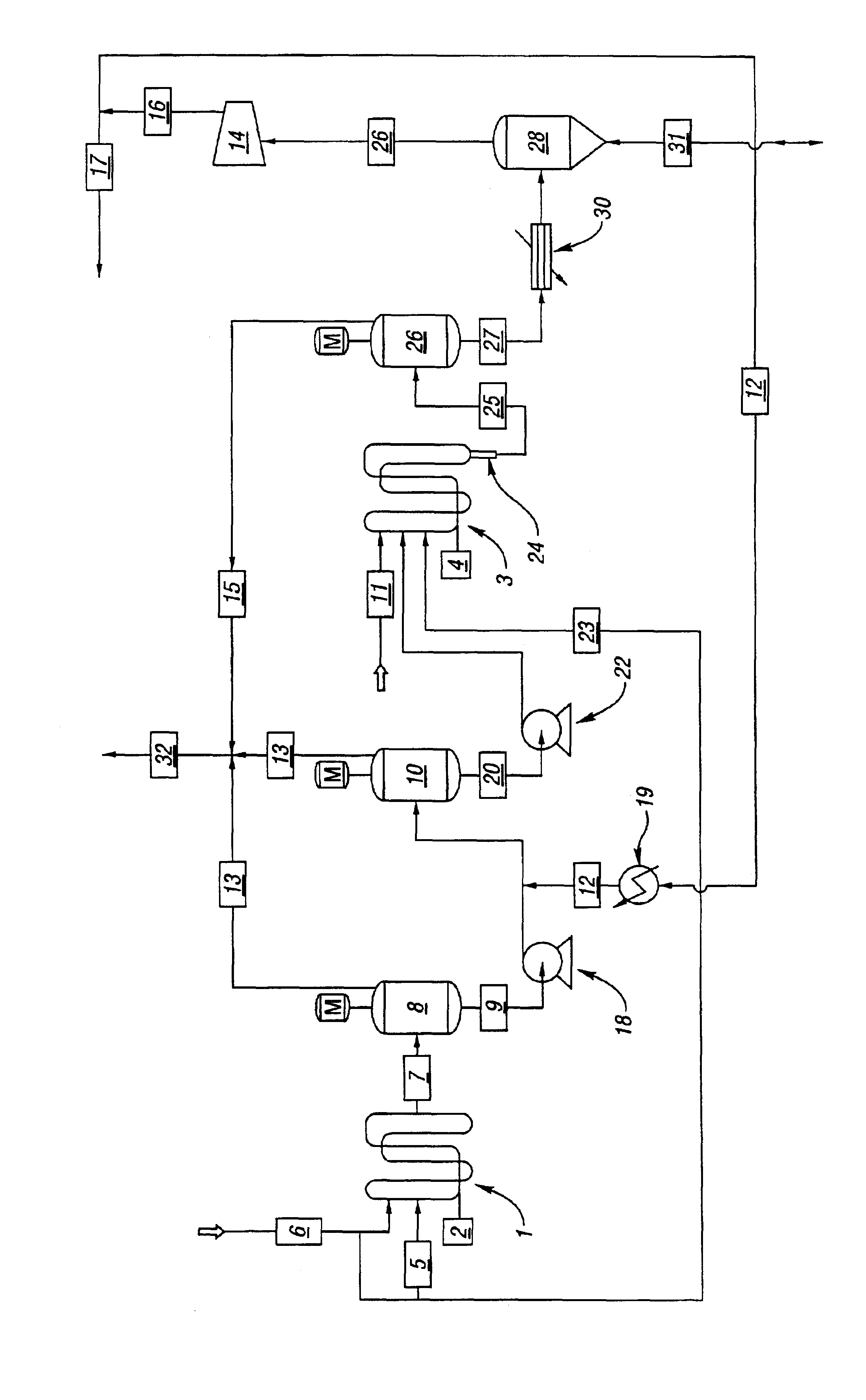Process for removal of intermediate hydrogen from cascaded polyolefin slurry reactors
a technology of cascaded polyolefin and intermediate hydrogen, which is applied in the field of olefin polymerization in slurry reactors, can solve the problems of increasing the cost of blending operation, and generally inferior physicochemical properties of multimodal resin produced by blending
- Summary
- Abstract
- Description
- Claims
- Application Information
AI Technical Summary
Benefits of technology
Problems solved by technology
Method used
Image
Examples
example 1
[0047]The example assumes that two vertical slurry loop reactors will be cascaded in series, with a two stage flash drum intermediate hydrogen removal system located between the two reactors. The first reactor in the series is denoted as the “A” reactor, and the second reactor is denoted as the “B” reactor. The loop reactors are tube-within-tube reactors wherein the inner tube, of 24″ inside diameter carbon steel, constitutes the polymerization reactor, and the outer tube, nominally 42″ inside diameter, defines the coolant capacity between the outer and inner tubes. The reactors are run solvent full, and nominally produce 60,000 lb / hr of a bimodal HDPE containing 1-butene as a comonomer. The ‘A’ reactor (1) is a 1500 ft, 31,000 gal six-leg reactor with a 2.0-hour residence time. The ‘B’ reactor (3) is a 2000 ft, 42,000 gal eight-leg reactor with a 1.4-hour residence time. Both reactor jackets are significantly oversized, thus providing the capability for reactor operations at higher...
PUM
| Property | Measurement | Unit |
|---|---|---|
| polydispersity | aaaaa | aaaaa |
| boiling point | aaaaa | aaaaa |
| boiling point | aaaaa | aaaaa |
Abstract
Description
Claims
Application Information
 Login to View More
Login to View More - R&D
- Intellectual Property
- Life Sciences
- Materials
- Tech Scout
- Unparalleled Data Quality
- Higher Quality Content
- 60% Fewer Hallucinations
Browse by: Latest US Patents, China's latest patents, Technical Efficacy Thesaurus, Application Domain, Technology Topic, Popular Technical Reports.
© 2025 PatSnap. All rights reserved.Legal|Privacy policy|Modern Slavery Act Transparency Statement|Sitemap|About US| Contact US: help@patsnap.com

